Rob Koudijs’s recent passing also brought an immediate end to the eponymous gallery’s 17-year existence. Yet another gallery for contemporary jewelry has disappeared.
Some of the gallery’s artists who knew him well helped me paint a picture.

The last pop-up
In 2022 Koudijs had already bid farewell, as a consequence of the COVID years, to his acclaimed space on Elandsgracht, in Amsterdam. He continued selling from home, in Haarlem, at art fairs, and during pop-up weekends. Those pop-ups, set in beautiful historical locations, each presented two artists: Beppe Kessler and Ralph Bakker in the Luthermuseum, in Amsterdam; Daniel Kruger and Bettina Speckner in Teylers Museum, in Haarlem; and, in June 2024, Helen Britton and Marion Blume in the stately rooms of a chamber of rhetoric in Haarlem.
That weekend, Britton and Blume witnessed Koudijs, who they knew as a man of boundless energy, having memory problems. He had yet to be diagnosed with a malignant brain tumor. Unintentionally, that was the last show. Terhi Tolvanen and Koen Jacobs’s exhibition, scheduled only a few months later in yet another historical Haarlem town palace, was canceled.
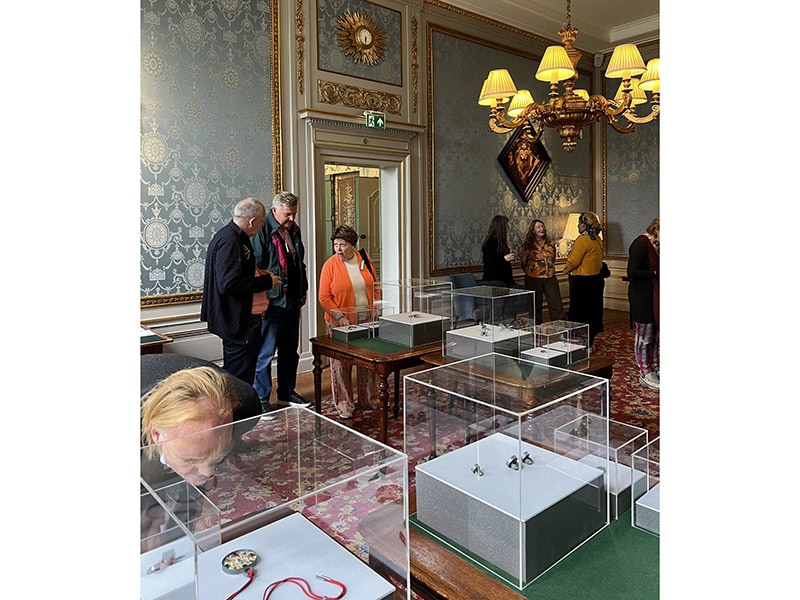
A Room for New Jewellery
Koudijs was in social work when he first encountered art jewelry in the booth of Galerie Marzee at the KunstRAI art fair. The story goes that, before he knew it, he wasn’t only admiring the jewelry in the booth, but also selling the pieces! Long story short, he assisted Marzee during the fairs for years. After that he became partner in Amsterdam jewelry gallery Galerie Louise Smit while still working the other half of the week as a therapist in an assisted living program.
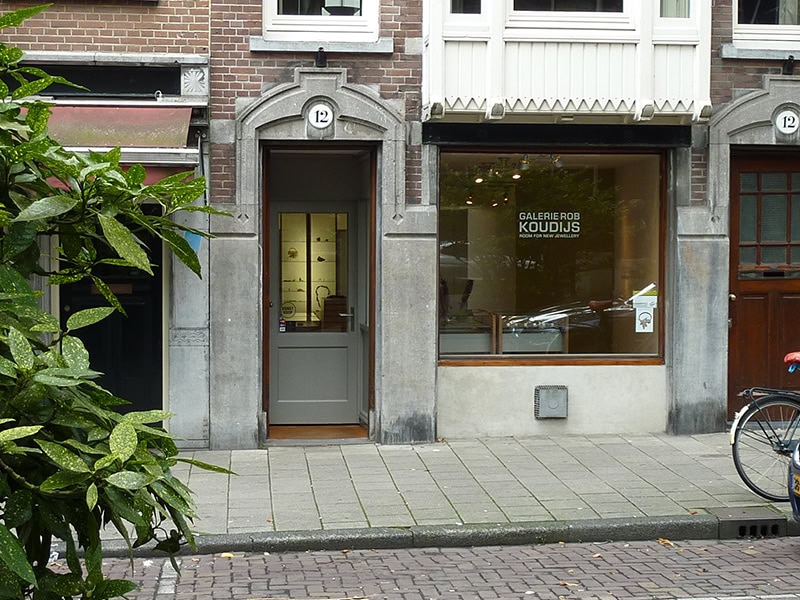
When their 10-year partnership ended abruptly, Koudijs decided to open his own gallery in the same city. Britton remembers that separation as painful, almost “like when your parents split.” In 2007 the gallery became a reality: Galerie Rob Koudijs, Room for New Jewellery. Koudijs continued to do what he liked best: engage with young, international artists and promote the art form that excited him so.
Care and clarity
Some Louise Smit artists joined, especially after Smit closed her doors. Beppe Kessler was one of them. She has fond memories of the substantial conversations about her pieces with Rob and his life partner, Ward Schrijver. “Ward focused on the architectural side and Rob zoomed in on the small details,” she says. Although they were running a business, the gallerists held their artists in high esteem, says Kessler. For example, they threw a dinner party on the gallery’s 10th anniversary and invited only their artists, not their clientele.
The shop on Elandsgracht had a main space and smaller part near the shop window, called the Front Room.
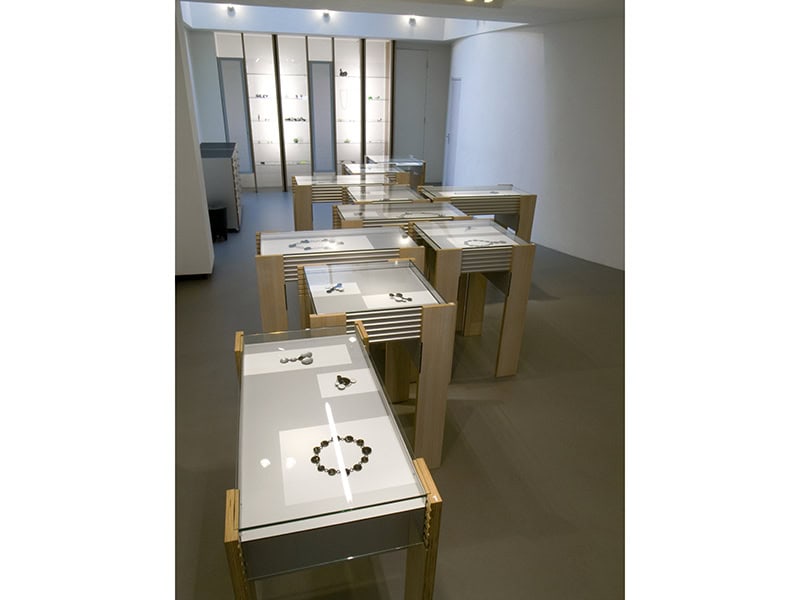
With Schrijver’s talents as the designer of the space and the gallery’s furnishings, it comes as no surprise that Ralph Bakker describes him as the silent force behind the jewelry displays. Other than a green wall behind the desk, the interior of Galerie Rob Koudijs was white and spare. Bakker liked how “it was neutral and gave space to the works.” But the gallery welcomed wild initiatives in presentation, too, like Jantje Fleischhut’s frozen food boxes, Ted Noten’s loud “sale” signs, and Célio Braga’s installation of detached wooden drawers.
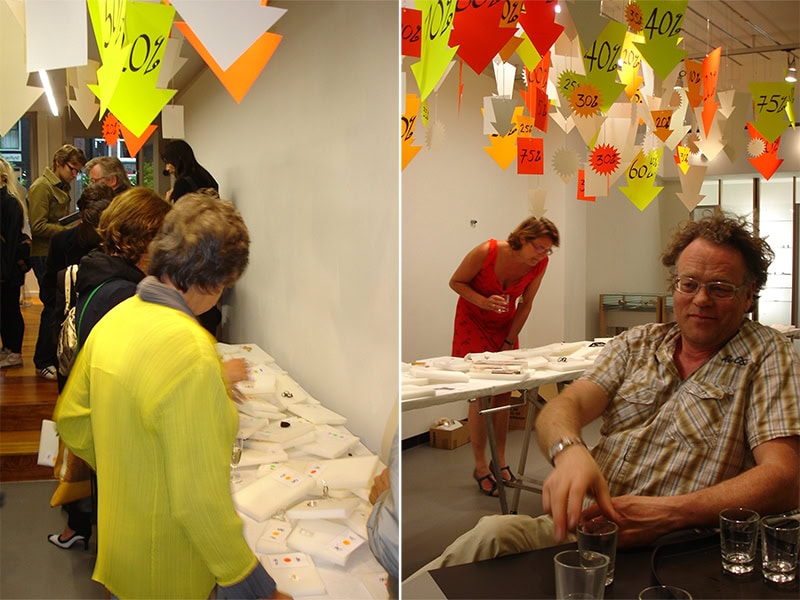
Deep care also appears in the introductory texts Schrijver wrote for shows, and in the online catalogs Koudijs started creating during COVID.[1] Schrijver was also behind the publications documenting the gallery’s work at years one, two, and five. In 2017, for its 10-year anniversary, the gallery issued Of Things and Life. The book indirectly conveyed Schrijver and Koudijs’s enthusiasm for the artists in the gallery by describing how they fell in love with certain pieces in their personal jewelry collections.
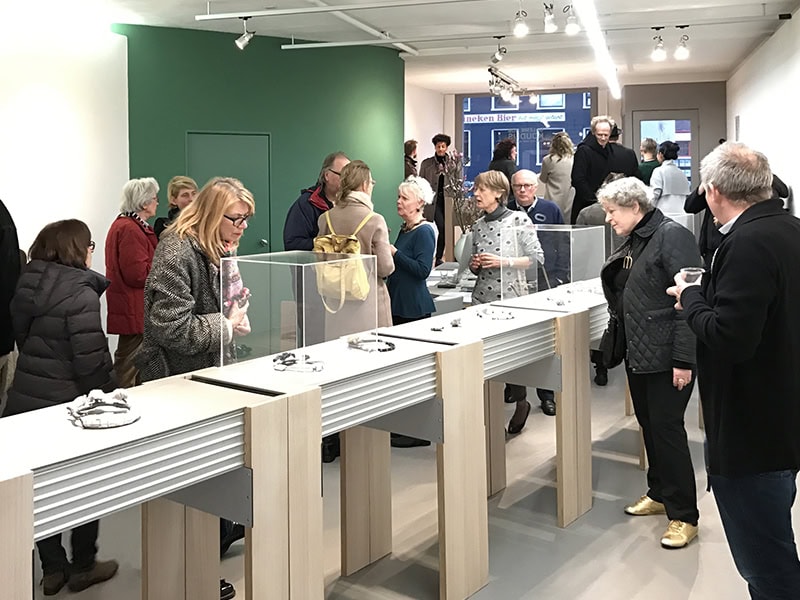
The years were packed with new shows every six weeks, book launches, lectures, and presence at KunstRAI, PAN Amsterdam, Collect London, and other off-site events. The gallery promoted them on its immaculate website. Terhi Tolvanen would consult it with her students in Limoges, I’ve used it as a reference many times, and we surely are not the only ones. Let’s hope this treasure trove stay online. The website has now become an archive of its numerous artists and exhibitions. The photos of lively openings—found under the heading “Impressions”—serve as a time capsule and are great fun to look at.[2]
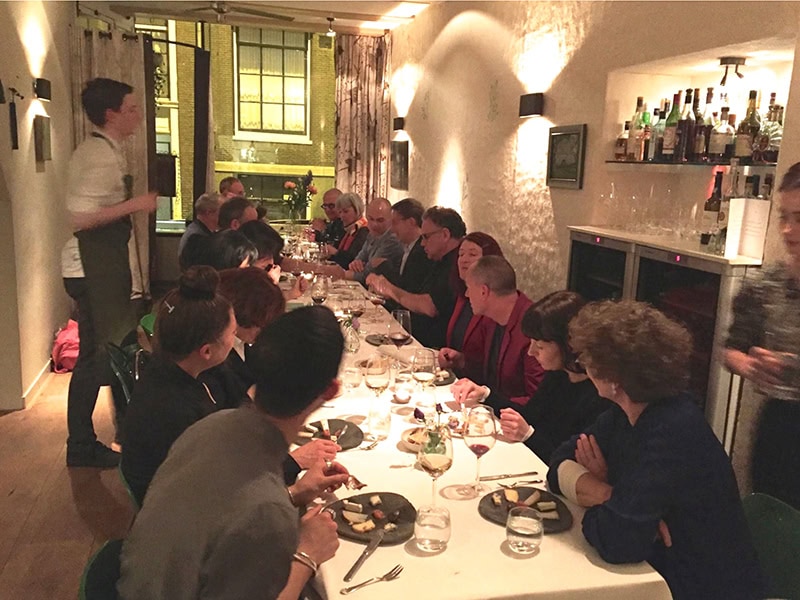
A confident eye
Galerie Rob Koudijs never had a booth during Munich’s annual Schmuck week. The gallerists were in attendance, though, to meet customers and establish new contacts. Paul Adie studied in Munich and remembers Koudijs as a quick decision-maker. He saw the artist’s work, bought a piece, and invited Adie to exhibit with the gallery straight away. “The thing that made Rob stand out was his risk-taking,” says the maker. Even now, with much more experience, he doesn’t know many gallery owners willing to do that. Koudijs was always immediately interested when Adie had new work coming off the bench. “And when it changed dramatically, he thought that that was fantastic, too,” continues Adie. That enthusiasm was not without a critical eye. When Adie’s brooch pins needed to be sharper, Koudijs told him so.
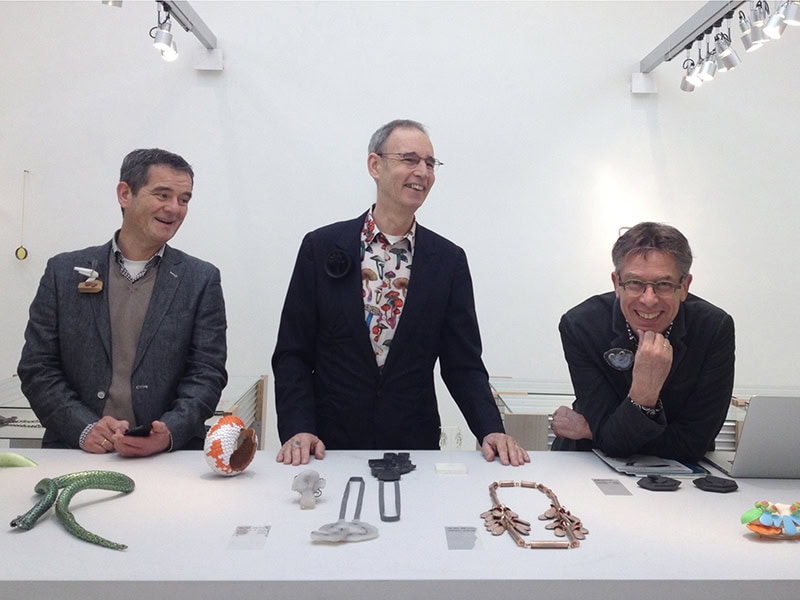
Tolvanen and I talked on the day the opening of her pop-up with Koudijs was originally scheduled. She said that Koudijs stuck with his quick decisions, and he was usually proven right. Tolvanen’s start, for example, was a solo show at the KunstRAI Fair, with Galerie Louise Smit. She was proud to see her name in big letters on the booth wall. But she only sold one piece, priced at €130. Koudijs did not blink an eye. The next Tolvanen exhibition was a huge success and sold out almost completely. Tolvanen is still thankful for Koudijs’s unconditional confidence and support.
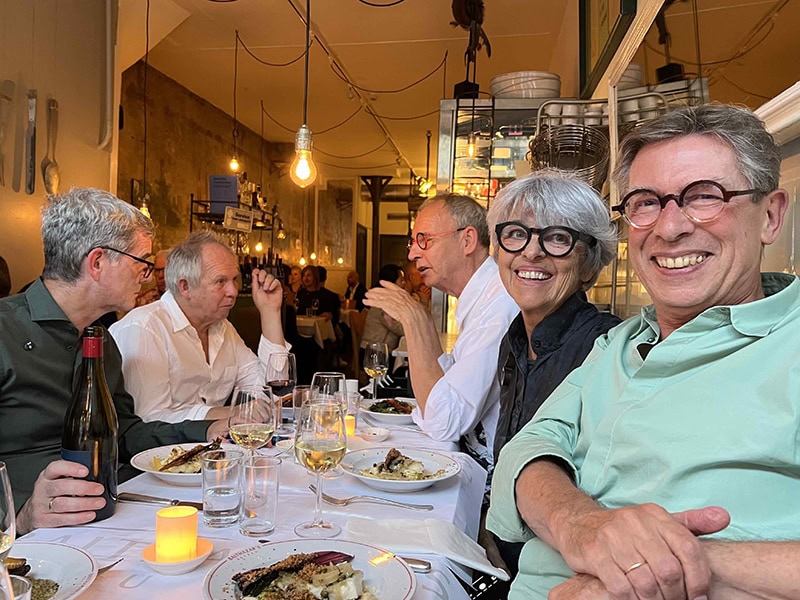
Friendships, trust, admiration
Koudijs and Schrijver maintained warm ties with their artists and their clients. The first thing that comes to the American collector Susan Beech’s mind when she thinks of Koudijs is “hugs, warm welcoming hugs.” Whenever they were in the same city, any city, they tried to have dinner together. Some of Beech’s favorite jewelry pieces are “from Rob.” She is currently donating part of her collection to museums. But she can’t part with a favorite Evert Nijland brooch she bought from Koudijs.
Helen Britton’s connection with Koudijs dates back to the Louise Smit years. When he got to know her work in Munich, he immediately started collecting it. She remembers his enthusiasm gave her the feeling he believed in her.
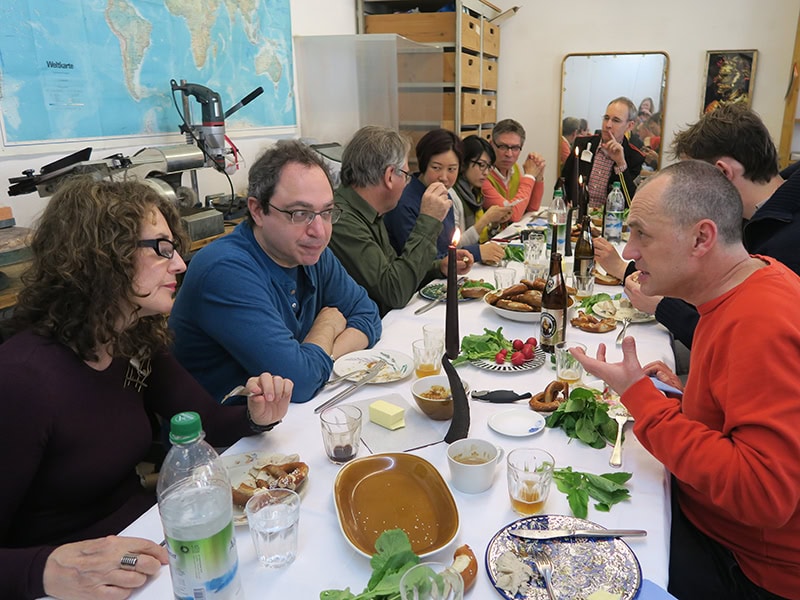
This man Helen Britton called her “art father” will be missed. This man who made Paul Adie sigh, “I would like to be like him when I’m older, so handsome and dashing, just so elegant,” will be missed. The institution Rob Koudijs will be missed. No more looking for the distinctive green wall at art fairs. No more being greeted by that broad smile as an invitation to the jewelry he loved so intensely.
In his farewell to his husband, Schrijver wrote “let us carry the memories with us like a piece of jewelry.” But from now on, new jewelry will have to find space elsewhere.
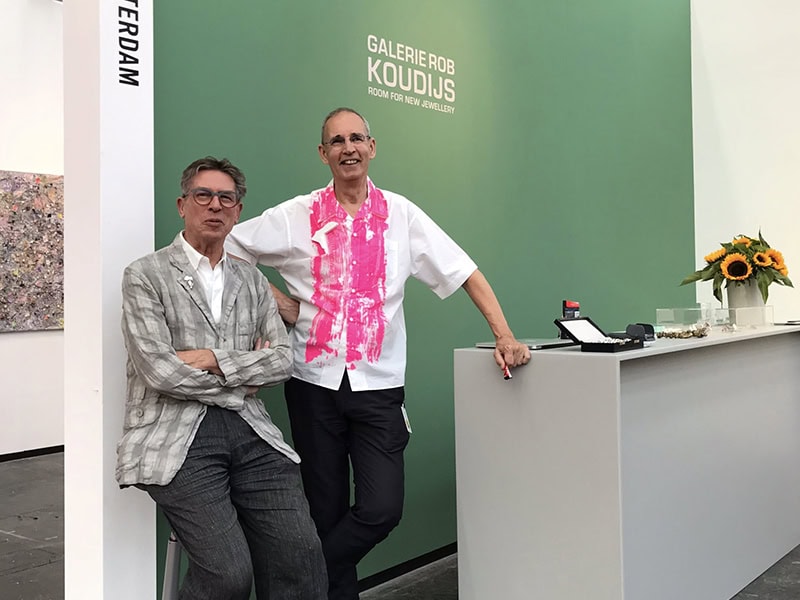
Thank you to Paul Adie, Ralph Bakker, Susan Beech, Helen Britton, Beppe Kessler, and Terhi Tolvanen for sharing your memories.
[1] See one of them here.
[2] Visit the gallery’s website, here.
We welcome your comments on our publishing, and will publish letters that engage with our articles in a thoughtful and polite manner. Please submit letters to the editor electronically; do so here.
© 2024 Art Jewelry Forum. All rights reserved. Content may not be reproduced in whole or in part without permission. For reprint permission, contact info (at) artjewelryforum (dot) org
